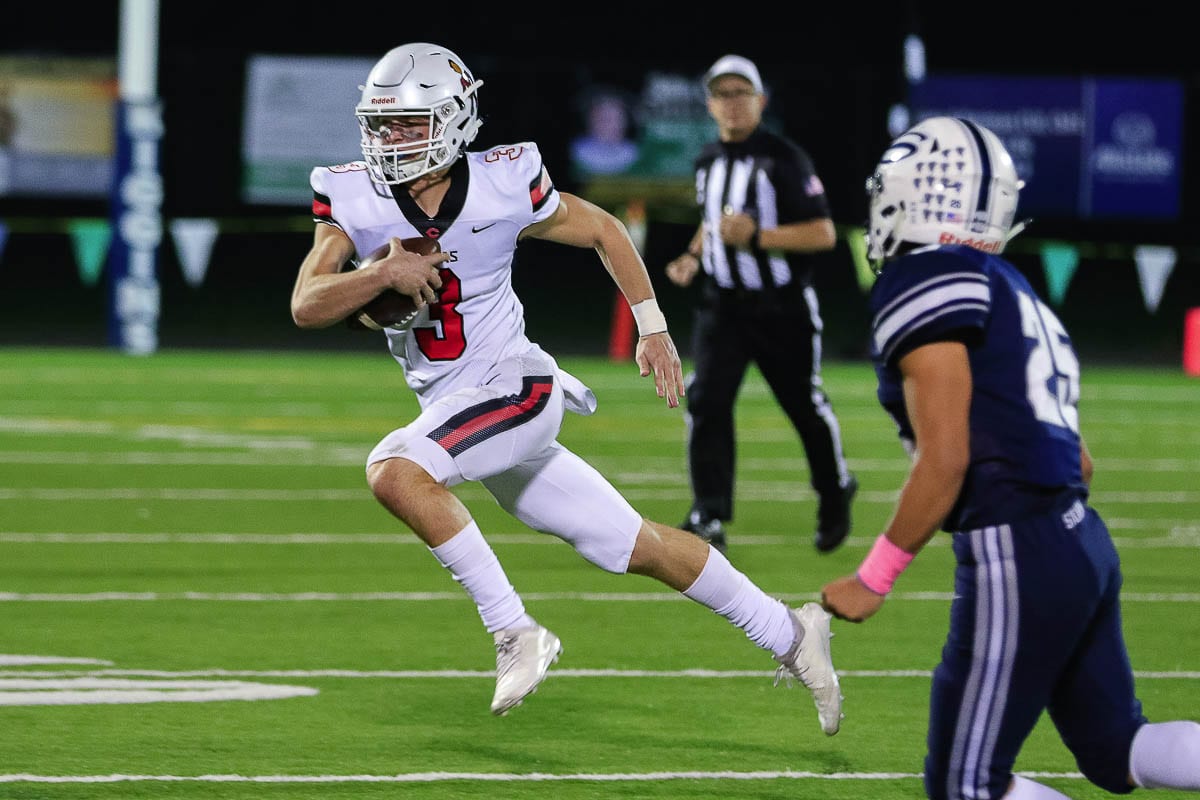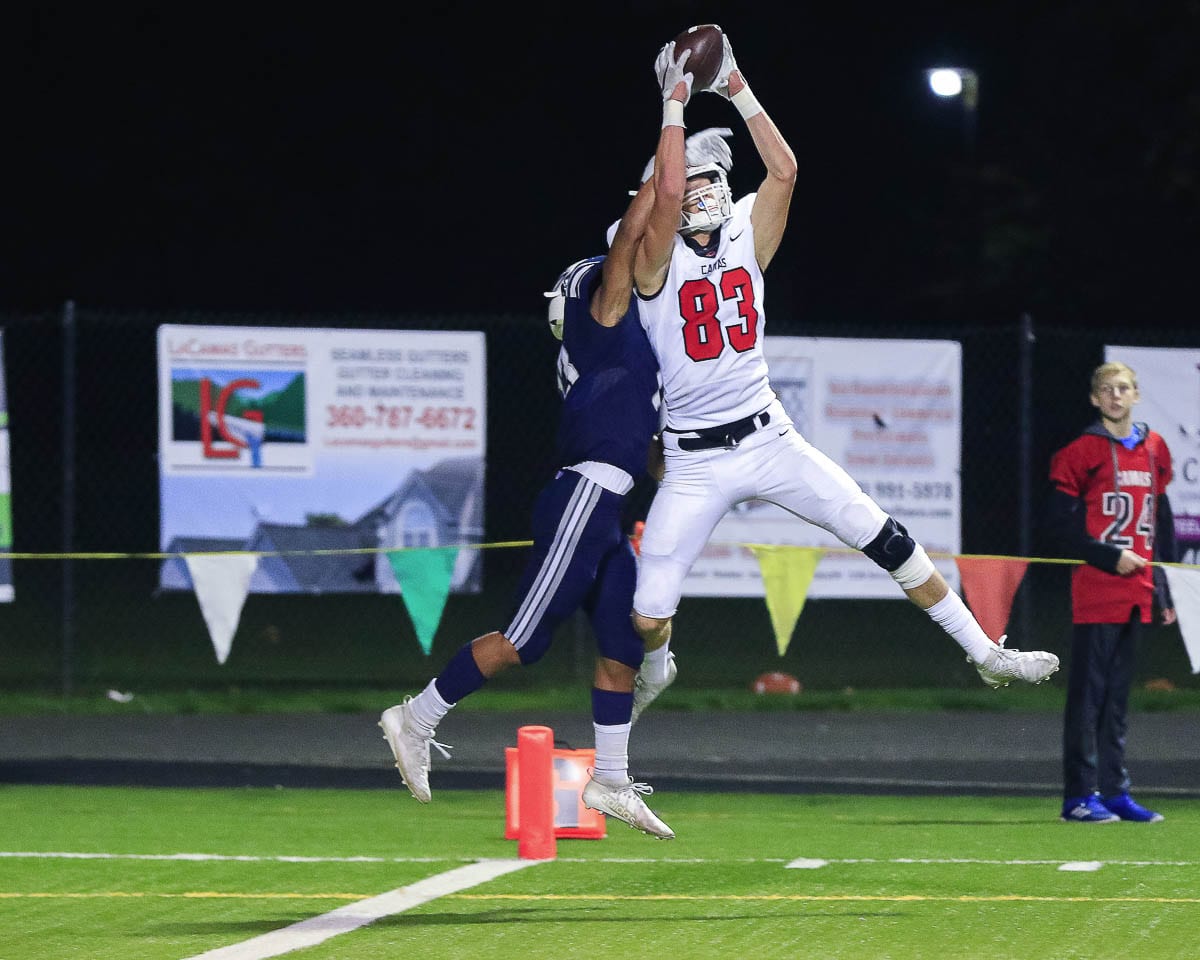No fall season, but decisions still have to be made
Jake Blair was a “player to watch” even before he was playing quarterback as a sophomore for one of the most successful high school football programs in the state.
As a junior at Camas, he became a bigger name in recruiting circles as he helped the Papermakers to an 8-0 record before an injury ended his season last year. Camas would go on to win six more games and win a state championship.
Last week, Blair, now a senior, made his college decision.
He has not played a game since his injury. His team has not played since the December state championship. There are no new highlights.
There is, however, a sense of urgency.

Instead of waiting on a possible scholarship offer, instead of the potential for more opportunities, Blair accepted Oregon’s State invitation to become a PWO, a preferred walk-on, with the Beavers.
“With (high school football) season pushed to the spring, and the uncertainty of Signing Day, those were huge factors for me in making my decision right now,” Blair said. “The uncertainty of everything definitely played a big factor in that.”
As of now, the traditional signing days for NCAA sports have remained the same. For football, there are signing periods in December and February.
High school football in Washington is tentatively scheduled to begin in February.
Ryland Spencer, a recruiting analyst and owner of Cascadia Preps, said one college coach told him directly: “We’re not going to wait until the state of Washington plays football.”
“That tells you everything you need to know,” Spencer said. “I don’t know a single person out there who thinks the NCAA is going to push back Signing Day. If they don’t (push it back), we’re going to be playing (high school) football after Signing Day.”
Same is true for other sports such as basketball, volleyball, men and women’s soccer. Club sports give those athletes a big platform to showcase their skills.
In football, though, high school competition remains king for football recruiting. The skills camps, the 7-on-7 drills, they are important. But nothing tops real, 11-on-11, Friday Night Lights football video to help in the recruitment of football players.
Blair said he loves Oregon State and its coaching staff. The Beavers first took notice of Blair prior to his sophomore season. The interest has been there for years.
Still, under a normal offseason, Blair would have been going to college camps, showcasing his skills at clinics.
“It was supposed to be a huge summer for me,” Blair said, noting he had offers from Columbia University and Georgetown.
He was going to fly east in July to visit, get a feel for those schools.
Cancelled.
“It was going to be a big opportunity for me,” Blair said. “You can’t really do anything about it. You just have to work with what you have.”

If this were a normal year, Camas football would right now be preparing for Week 8.
The general rule, Spencer said, is athletes should start sending their film to colleges after four regular-season games. Then again after the regular season. And for those athletes who go on long playoff runs, find more clips and send to coaches after the postseason is complete. Spencer also usually receives a lot of the film from players.
“By this point, I would have seen film on 200-plus kids,” Spencer said.
Not this fall.
COVID-19 has changed so much in the world, including the college athletics recruiting process.
For Blair, at least, he was already a known talent. There are plenty of other athletes who need a senior season to shine.
“I truly believe guys on my team, other recruits from the area, would have more opportunities and open more doors if we had a season right now,” Blair said.
In fact, Camas football has a perfect example of just what a senior year can do for an athlete.
In the 2018 football season, Jackson Clemmer had a role to play for the Papermakers when he was a junior. He did his job, but he would not have been considered a “name” going into his senior season.
Then the 6-foot-6 wide receiver blossomed, turning himself into one of the best players in the state. Today, he is at Southern Oregon University, preparing for his first season of college football. (The NAIA also has a tentative schedule to begin play in February 2021.)
He feels for any late bloomer in the recruiting process this year. He knows.
“If I didn’t have a senior year, I would not have been going anywhere,” Clemmer said. “I wouldn’t have had any highlights. I didn’t do anything that was college worthy my junior year.”
As a senior, he had 17 touchdown receptions, with many coming from Blair and then Blake Asciutto, the quarterback who filled in for Blair after the injury.
“Personally, I can’t take any credit for it,” a humble Clemmer said of his senior season. “I was just the person there. I was the receiver. Jake and Blake throwing perfectly to me, and the insane O-line we had. The entire team, in general. Everybody was successful because everyone held each other accountable.”
Because that happened, though, at least one player — Clemmer — was able to take advantage to find a college program.
Make that two players. Asciutto, the quarterback who went 6-0 after Blair went down, is also at Southern Oregon.
With no football this fall, what will that mean for the late bloomers of the Class of ‘21?
A Division-III coach told Spencer that his program is going to be able to recruit players that he never imagined he would have the opportunity to get to come to his school. The bigger programs will be looking at athletes from states that are playing football right now. The smaller college programs will then get a chance to see D-I or D-II talent that is not playing now and did not get the bigger opportunities.
Another wrinkle to the new way of recruiting: The NCAA is allowing this year’s college seniors the option of returning next year. Spencer said he knows of one Washington high school player who had two offers rescinded because those colleges had too many seniors returning next year.
All this will lead to fewer Division-I opportunities. But, one door closes, another opens. There will be options at smaller programs.
For Blair, a preferred walk-on offer at Oregon State, while not a scholarship, still has plenty of benefits. OSU’s head coach, Jonathan Smith, was a walk-on before earning a scholarship and a starting job, leading Oregon State to a Fiesta Bowl win in January 2001. So Blair knows the coaching staff will treat him well.
No player dreams of becoming a preferred walk-on, but Blair said this is the next-best thing. He will be in the Pac-12. He will be close to home. He said the program fits with his values, too.
“You do everything the team does. You just don’t get the money piece,” Blair said. “You get all the nutritional benefits, the school benefits. And down the road, I could earn a scholarship.”
It is an opportunity in a year when traditional opportunities have changed.
Football players understand sudden change in a game. Now, the recruiting process has had a sudden change.
Athletes must adapt.




